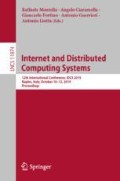Abstract
The intrinsic features of Internet networks lead to imbalanced class distributions when datasets are conformed, phenomena called Class Imbalance and that is attaching an increasing attention in many research fields. In spite of performance losses due to Class Imbalance, this issue has not been thoroughly studied in Network Traffic Classification and some previous works are limited to few solutions and/or assumed misleading methodological approaches. In this study, we propose a method for generating network attack traffic to address data imbalance problems in training datasets. For this purpose, traffic data was analyzed based on deep packet inspection and features were extracted based on common traffic characteristics. Similar malicious traffic was generated for classes with low data counts using Wasserstein generative adversarial networks (WGAN) with a gradient penalty algorithm. The experiment demonstrated that the accuracy of each dataset was improved by approximately 5% and the false detection rate was reduced by approximately 8%. This study has demonstrated that enhanced learning and classification can be achieved by solving the problem of degraded performance caused by data imbalance in datasets used in deep learning based intrusion detection systems.
Access this chapter
Tax calculation will be finalised at checkout
Purchases are for personal use only
References
Tama, B.A., Rhee, K.H.: Performance analysis of multiple classifier system in DoS attack detection. In: Kim, H.-W., Choi, D. (eds.) WISA 2015. LNCS, vol. 9503, pp. 339–347. Springer, Cham (2016). https://doi.org/10.1007/978-3-319-31875-2_28
Tama, B.A., Rhee, K.H.: A combination of PSO-based feature selection and tree-based classifiers ensemble for intrusion detection systems. In: Park, D.S., Chao, H.C., Jeong, Y.S., Park, J. (eds.) Advances in Computer Science and Ubiquitous Computing. LNEE, vol. 373, pp. 489–495. Springer, Singapore (2015). https://doi.org/10.1007/978-981-10-0281-6_71
Tama, B.A., Rhee, K.H.: Data mining techniques in DoS/DDoS attack detection: a literature review. Information 18(8), 3739–3747 (2015)
Zhu, X., Liu, Y., Li, J., Wan, T., Qin, Z.: Emotion classification with data augmentation using generative adversarial networks. In: Phung, D., Tseng, V.S., Webb, G.I., Ho, B., Ganji, M., Rashidi, L. (eds.) PAKDD 2018. LNCS (LNAI), vol. 10939, pp. 349–360. Springer, Cham (2018). https://doi.org/10.1007/978-3-319-93040-4_28
Douzas, G., Bacao, F.: Effective data generation for imbalanced learning using conditional generative adversarial networks. Expert Syst. Appl. 91, 464–471 (2018)
Mariani, G., et al.: BAGAN: data augmentation with balancing GAN. arXiv, preprint arXiv:1803.09655 (2018)
He, H., Garcia, E.A.: Learning from imbalanced data. IEEE Trans. Knowl. Data Eng. 21(9), 1263–1284 (2009)
Yao, H.P., Liu, Y.Q., Fang, C.: An abnormal network traffic detection algorithm based on big data analysis. Int. J. Comput. Commun. Control 11(4), 567–579 (2016)
Li, Y., Ma, R., Jiao, R.: A hybrid malicious code detection method based on deep learning. Methods 9(5), 205–2016 (2015)
Tavallaee, M., et al.: A detailed analysis of the KDD CUP 99 data set. In: IEEE Computational Intelligence for Security and Defense Applications, CISDA. IEEE Symposium (2009)
Hariharan, B., Girshick, R.B.: Low-shot visual recognition by shrinking and hallucinating features. In: ICCV (2017)
Arjovsky, M., Chintala, S., Bottou, L.: Wasserstein GAN. arXiv, preprint arXiv:1701.07875 (2017)
Gulrajani, I., et al.: Improved training of Wasserstein GANs. In: Advances in Neural Information Processing Systems (2017)
Kim, J.Y., Bu, S.J., Cho, S.B.: Malware detection using deep transferred generative adversarial networks. In: Liu, D., Xie, S., Li, Y., Zhao, D., El-Alfy, E.S. (eds.) International Conference on Neural Information Processing. LNCS, vol. 10634, pp. 556–564. Springer, Cham (2017). https://doi.org/10.1007/978-3-319-70087-8_58
Sun, D., et al.: A new mimicking attack by LSGAN. Tools with artificial intelligence (ICTAI). In: IEEE 29th International Conference on IEEE (2017)
Yin, C., et al.: An enhancing framework for botnet detection using generative adversarial networks. In: 2018 International Conference on Artificial Intelligence and Big Data (ICAIBD). IEEE (2018)
Li, D. et al.: Anomaly detection with generative adversarial networks for multivariate time series. arXiv, preprint arXiv:1809.04758 (2018)
Lin, Z., Shi, Y., Xue, Z.: IDSGAN: generative adversarial networks for attack generation against intrusion detection. arXiv, preprint arXiv:1809.02077 (2018)
Dainotti, A., Pescape, A., Claffy, K.: Issues and future directions in traffic classification. Netw. IEEE 26(1), 35–40 (2012)
Creech, G., Hu, J.: Generation of a new IDS test dataset: time to retire the KDD collection. In: IEEE Wireless Communications and Networking Conference (WCNC), pp. 4487–4492 (2013)
Moustafa, N., Slay, J.: UNSW-NB15: a comprehensive data set for network intrusion detection systems (UNSW-NB15 network data set). In: 2015 Military Communications and Information Systems Conference (MilCIS). IEEE (2015)
Yu, L., Zhang, W., Wang, J., Yu, Y.: SeqGAN: sequence generative adversarial nets with policy gradient. In: AAAI, pp. 2852–2858 (2017)
Kusner, M.J., Hernández-Lobato, J.M.: GANs for sequences of discrete elements with the gumbel-softmax distribution. arXiv preprint arXiv:1611.04051 (2016)
Bhaskara, V.S., et al.: Emulating malware authors for proactive protection using GANs over a distributed image visualization of dynamic file behavior. arXiv, preprint arXiv:1807.07525 (2018)
Kingma, D.P., Ba, J.: Adam: a method for stochastic optimization. In: International Conference on Learning Representations (ICLR) (2015)
Gómez, S.E., et al.: Exploratory study on class imbalance and solutions for network traffic classification. Neurocomputing 343, 100–119 (2019)
Author information
Authors and Affiliations
Corresponding authors
Editor information
Editors and Affiliations
Rights and permissions
Copyright information
© 2019 Springer Nature Switzerland AG
About this paper
Cite this paper
Lee, W., Noh, B., Kim, Y., Jeong, K. (2019). Generation of Network Traffic Using WGAN-GP and a DFT Filter for Resolving Data Imbalance. In: Montella, R., Ciaramella, A., Fortino, G., Guerrieri, A., Liotta, A. (eds) Internet and Distributed Computing Systems . IDCS 2019. Lecture Notes in Computer Science(), vol 11874. Springer, Cham. https://doi.org/10.1007/978-3-030-34914-1_29
Download citation
DOI: https://doi.org/10.1007/978-3-030-34914-1_29
Published:
Publisher Name: Springer, Cham
Print ISBN: 978-3-030-34913-4
Online ISBN: 978-3-030-34914-1
eBook Packages: Computer ScienceComputer Science (R0)

